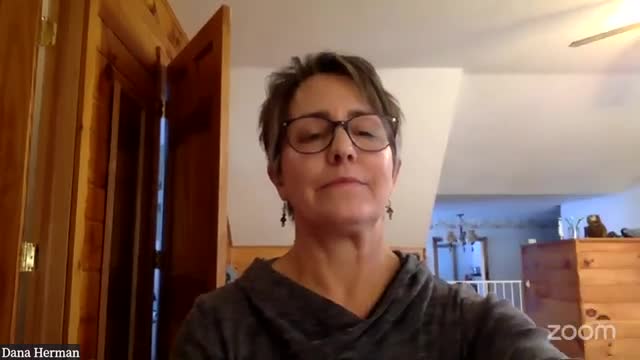Lower Wisconsin State Riverway Board celebrates 35 years of conservation efforts
December 12, 2024 | Department of Natural Resources, Executive Departments, Executive, Wisconsin
This article was created by AI summarizing key points discussed. AI makes mistakes, so for full details and context, please refer to the video of the full meeting. Please report any errors so we can fix them. Report an error »

The recent Natural Resources Board meeting highlighted significant developments regarding the Lower Wisconsin State Riverway, a vital ecological and recreational resource in Wisconsin. Diane Brussell, Division Administrator for Fish, Wildlife, and Parks, and Mark Cupp, Executive Director of the Lower Wisconsin State Riverway Board, presented an overview of the riverway's achievements and ongoing management efforts.
The Lower Wisconsin State Riverway, established in 1989, spans 92.3 miles and is recognized as the longest free-flowing river stretch in the Midwest. It is not only a critical habitat for various bird species but also a designated wetland of international importance. The riverway encompasses approximately 95,000 acres, with the Department of Natural Resources (DNR) managing about 51,000 acres. Since its inception, the DNR has invested over $42 million in land acquisitions to enhance conservation efforts and recreational opportunities.
Brussell emphasized the importance of the riverway for outdoor activities, noting that it serves as a major destination for hunting, fishing, hiking, and canoeing. The area attracts visitors from across the state and contributes significantly to the local economy, with public access points and recreational facilities enhancing community engagement with the natural environment.
Cupp shared insights into the Riverway Board's regulatory role, which includes issuing permits for activities within the riverway. He highlighted successful collaborations with local organizations and volunteers, particularly in conservation efforts, such as rescuing stranded mussels during low water conditions. The board's commitment to aesthetic protection has led to innovative designs for infrastructure projects, ensuring that new developments harmonize with the natural landscape.
The meeting also addressed the importance of local representation on the board, which includes members from the counties along the river. This structure aims to balance landowner rights with environmental protection, fostering a cooperative approach to managing the riverway's resources.
As the board celebrates its 35th anniversary, the discussions underscored the ongoing challenges and successes in preserving the Lower Wisconsin State Riverway. The collaborative efforts between the DNR, the Riverway Board, and local communities continue to play a crucial role in maintaining this unique natural resource for future generations.
The Lower Wisconsin State Riverway, established in 1989, spans 92.3 miles and is recognized as the longest free-flowing river stretch in the Midwest. It is not only a critical habitat for various bird species but also a designated wetland of international importance. The riverway encompasses approximately 95,000 acres, with the Department of Natural Resources (DNR) managing about 51,000 acres. Since its inception, the DNR has invested over $42 million in land acquisitions to enhance conservation efforts and recreational opportunities.
Brussell emphasized the importance of the riverway for outdoor activities, noting that it serves as a major destination for hunting, fishing, hiking, and canoeing. The area attracts visitors from across the state and contributes significantly to the local economy, with public access points and recreational facilities enhancing community engagement with the natural environment.
Cupp shared insights into the Riverway Board's regulatory role, which includes issuing permits for activities within the riverway. He highlighted successful collaborations with local organizations and volunteers, particularly in conservation efforts, such as rescuing stranded mussels during low water conditions. The board's commitment to aesthetic protection has led to innovative designs for infrastructure projects, ensuring that new developments harmonize with the natural landscape.
The meeting also addressed the importance of local representation on the board, which includes members from the counties along the river. This structure aims to balance landowner rights with environmental protection, fostering a cooperative approach to managing the riverway's resources.
As the board celebrates its 35th anniversary, the discussions underscored the ongoing challenges and successes in preserving the Lower Wisconsin State Riverway. The collaborative efforts between the DNR, the Riverway Board, and local communities continue to play a crucial role in maintaining this unique natural resource for future generations.
View full meeting
This article is based on a recent meeting—watch the full video and explore the complete transcript for deeper insights into the discussion.
View full meeting
